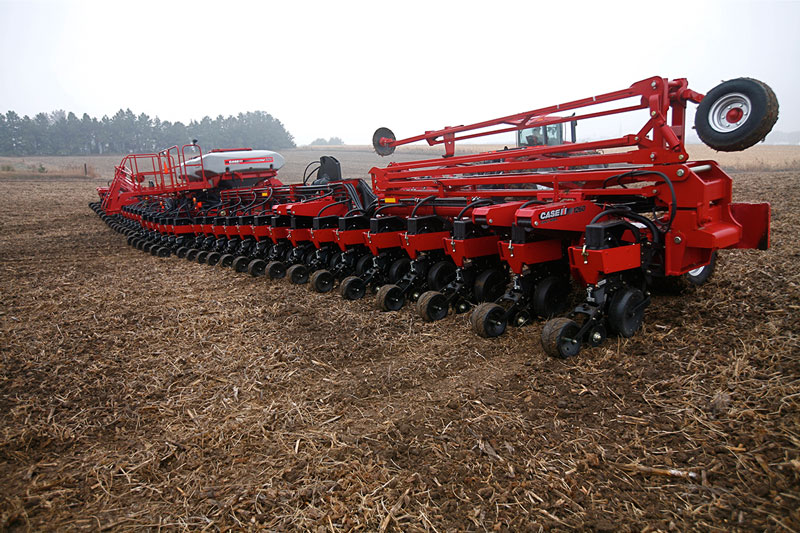June 21, 2012

The planter is an essential piece of equipment on the farm. Bill Hoeg, Case IH planter sales and marketing manager, North America, explains the importance of the planter and offers some tips for making your next planter buying decision.
Hoeg cites six agronomic principles of optimized planting growers should consider when buying a new planter: proper seed depth; uniform seed depth across the planter and throughout the field; good soil-to-seed contact; uniform soil pressure all around the seed; accurate seed population; and accurate in-row seed spacing.
He says a lot of planter manufacturers focus only on in-row seed spacing and accurate populations, “because quite honestly, accurate population and in-row seed spacing are the easiest to impact. But those are only two factors. A planter should be able to deliver on all six agronomic principles right out of the box,” Hoeg advises.
Planter agronomics
“Agronomically, it’s not complicated. If you plant at the right depth, seed will emerge faster. Plant at a uniform depth, and it’ll all come up together. That gives you the best opportunity to maximize yields. Good soil-to-seed contact provides the best environment for seed to germinate. Uniform seed pressure is the hardest to affect, but you want to influence soil pressure on all sides of the seed to maximize moisture conductivity to the seed,” he adds.
Maximum field time, minimum maintenance
According to Hoeg, a planter should also be designed to maximize time spent in the field. “The more time you’re forced to spend handling daily maintenance and making adjustments, the less time you’ll have to plant.
“And once you’re in the field, how many adjustments will you have to make every day to keep your planter operating at its best? Are the seed meter and vacuum/air systems sensitive to humidity changes, adverse ground conditions or different seed sizes? If there are four different seed plates you have to change just to handle corn hybrids, that’s going to slow you down,” he explains.
Operation, location and farming practices
Hoeg says the size and type of operation are also key factors. “If you have livestock to care for in addition to cash crops, you may need to size the planter differently, because there are fewer hours in the day available for planting. A lot also depends on the type of crop being planted. With some crops, you can’t use a 90-ft. planter, like with cotton, so you’ll need to cover more acres with a smaller planter. Transport width may also be a determining factor for growers who have multiple farms and different locations — or for those who simply have to deal with a narrow bridge nearby.
Other considerations are based on individual farming practices. What inputs do you want to use, how do you want to apply them and in what types of soil? How much time do you have to get it all done? What system do you want to use to fill the planter so you can minimize non-planting time? Are there going to be multiple operators running the planter? If so, ease of use becomes even more important.
“Even if you have big square fields, and there aren’t any waterways or other obstructions that cause you to plant in irregular rows, you will want to take advantage of the advanced systems that bigger planters offer,” Hoeg continues. He recommends using a system that allows for row shut-offs, driving guides and mapping capabilities to help you utilize every square inch of ground. Irregularly shaped fields with waterways and terraces only enhance the need for these advanced systems.
You May Also Like




